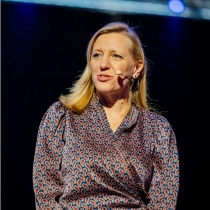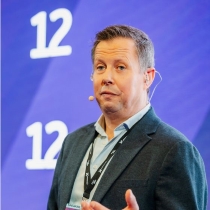These are the five ICT trends from Think NXT for 2025
Published on 17/12/2024 in Events
Think NXT 2024 was all about data and AI. But 5G, cloud, cyber resilience and digital sovereignty were also present at the event. These five trends are defining the IT landscape in a world where collaboration is key to commercial success.

The 5 ICT trends from Think NXT for 2025
Trend 1: Data en AI
According to research firm Gartner, by 2025, 9 in 10 companies will see AI as a business partner. They count on AI to boost their productivity, to control their costs better or to offer a better experience to their customers and employees. The big challenge as a business, then, is to be ready for AI. Proximus NXT responds to this with a portfolio of 130 AI use cases, supported by the hundred AI specialists of Codit and Proximus ADA.
Proximus is already using quite a few of these applications itself. When a technician takes a picture of a fibre connection, it is an AI application that analyses the image, assessing the quality of the work done. Another example can be found in Proximus shops where AI predicts product rotation preventing too much or too little stock. Analysis with AI of calls to Proximus' contact centre, in turn, leads to better insight into the reasons for the calls. It allows Proximus to brief contact centre agents better.
Not a magic wand

“Generative AI is proving itself in full force,” says Marijke Schroos, general manager at Microsoft Belux. “AI really is not a magic wand, it is a tool. You have to learn to find the right use case for it.” The great challenge is to look for that right use case within an organisation. These can be very simple, practical applications, such as Copilot that helps to handle e-mail faster. But equally they may be top-level cases that have the potential to redesign entire business processes.
Cisco also found such a use case for using AI, using AI to help Webex users. “Video conference participants sometimes suffer from echo,” says Keith Griffin, Site Leader at Cisco in Galway, Ireland. “Or there is interference so people don't always understand each other properly.” Cisco uses AI to remove those disturbing noises. Generative AI, in turn, provides a summary immediately after the conversation – such as a meeting or a call to a contact centre. This obviously saves time.
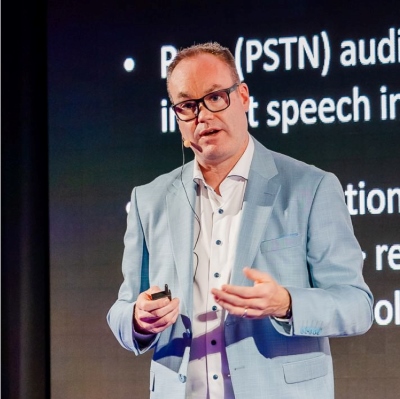
Trend 2: 5G
“5G is the highway on which everything happens at the speed of light,” said Anne-Sophie Lotgering, CEO of Proximus NXT IT at the Think NXT event in Mechelen. “The impact of the technology is huge, as it supports the redesign of existing and the development of completely new business models.”
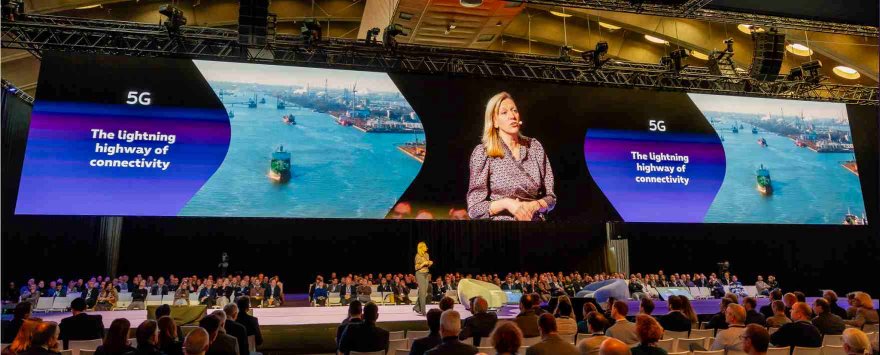
The key role for 5G is linked to the growing importance of data. Indeed, 5G offers much greater capacity, enabling the flow of large data volumes at an instant response time. However, one of the real differences from previous generations of mobile connectivity lies in network slicing: the ability to split the network and prioritise certain applications on such a separate ‘lane’.
From industry to healthcare
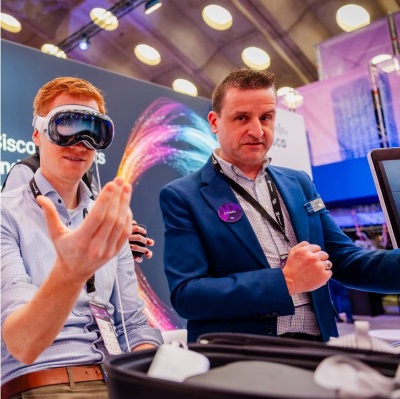
A private 5G network provides a company with a reliable solution for critical data traffic in real time, potentially making a significant difference. In a manufacturing environment, for example, 5G is indispensable for collecting data from connected devices and machines, passing it on for analysis and for feedback. In that context, think about the use of digital twins, or environments where cobots are active and where employees interact with AR glasses. It is the combination of coverage and reliable, ultra-low latency that makes 5G especially indispensable here.
In a similar way, 5G also enables many new applications in healthcare. Together with a range of different partners, Proximus NXT has built a private 5G network at az groeninge in Kortrijk. In this hospital, 5G forms the basis for very diverse applications: from the streaming of an operation to training with a VR application.
In the context of a hospital, 5G also offers a solution for guaranteed available critical communication, asset tracking (e.g. of medical devices) and more making the advantage of a private 5G network self-evident. The hospital has high-capacity mobile connectivity with very low latency, while none of the data – including sensitive patient data - leaves the site.

"5G allows us to offer a whole new experience."
Arnaud Lieutenant, Chief Information & Digital Officer at the Royal Belgian Football Association
Game changer
It is clear that 5G will continue to break through in 2025: for example, in the logistics sector (think automated vehicles and drones in warehouses) and in the media (for example, with 5G cameras for the live broadcast of sports matches or other events).
“5G is a real game changer for our sector,” says Arnaud Lieutenant, Chief Information & Digital Officer at the Royal Belgian Football Association. “5G allows us to offer a whole new experience. Think of the use of AR and VR, which will make it possible to watch a match at home but with the sense of sitting in the front row in the stadium.”
Trend 3: Edge Computing
“Turning data into strategic decisions is what Industry 4.0 is all about,” Anne-Sophie says. “The convergence between IT and OT is at a tipping point.” With this convergence, information technology and operational technology are no longer two separate worlds. The evolution makes the importance of data management even more obvious. Typical of operational technology – such as at a production machine in a factory – is that computing power and storage are often located as close to that plant as possible. Not centrally in the data centre, but at the edge of the network. Hence the term ‘edge computing’.
Turning data into strategic decisions is what Industry 4.0 is all about.
Anne-Sophie Lotgering, CEO of Proximus NXT IT
It is in this convergent world of IT and OT that I-care operates. The Belgian company is a world leader in predictive and prescriptive maintenance. “Data are the raw material for a decision,” says Pierre Colon, Strategic Marketing Director at I-care. IoT makes it possible to collect a lot of data in an operational environment. “With wireless sensors, you can continuously record data in an installation, where traditionally it would have been done manually and maybe only every three months.”
That continuous collection and analysis of data allows to predict and anticipate defects in an installation. “That results in significant cost savings in terms of maintenance and gives the installation a longer lifespan.” Moreover, in the example Pierre Colon discussed at Think NXT, I-care's approach had a significant impact on the plant's carbon footprint. “By focusing on prescriptive maintenance, the company managed to reduce its energy consumption thus reducing its carbon footprint by 2.6 million tonnes of CO2.”
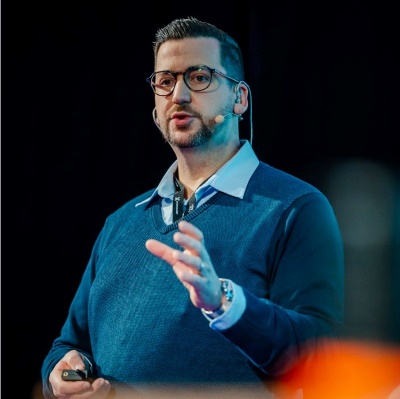
Trend 4: Cyber Resilience
One in three Benelux companies faced at least one cybersecurity incident in 2023. This is according to Proximus NXT's Cybersecurity Report 2024. “These incidents almost always has a major operational impact,” says Anne-Sophie. “There is a drop in productivity, but also the loss of customer data, operational data and intellectual property.”
The user is everywhere
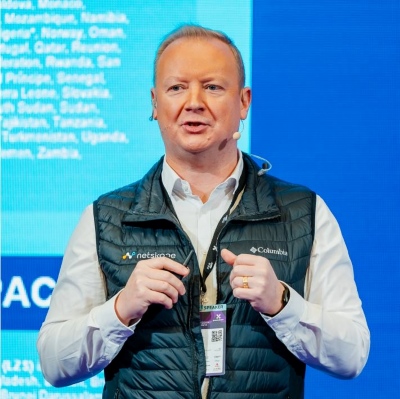
The challenges for cybersecurity will continue to grow in 2025. This is precisely why the industry is increasingly pushing the term ‘cyber resilience’. When it is no longer enough to avoid or repel attacks, you have to become even more resilient. “The classic user – who works with one PC in one office – no longer exists,” says Andy Quaeyhaegens, Senior Solutions Engineer at Netskope. “Today, the user is everywhere. Someone trying to log into a company server with a mobile device in the evening? That used to be suspicious, but is now perfectly normal.”
SASE (Secure Access Service Edge) is an approach that responds to this. It involves a framework that combines SD-WAN and SSE (Security Service Edge) and offers it as a service via the cloud. However, that new architecture does not require you inexorably to consign all existing security to the wastepaper basket. “Consider it a journey,” Think NXT says. You then implement SASE, for example, when you renew your workstations. “But also when you want to simplify your security environment,” says Andy, “or when you want to make security a business enabler, instead of looking at it purely as a cost.”
For customer, reputation and legislation
The importance of cyber resilience speaks for itself at Stibbe. The law firm manages a lot of sensitive client data and a security incident would not only harm those clients, but also the reputation of the firm itself. Recent years have also seen a lot of additional legislation, such as NIS2, resulting in additional obligations for cybersecurity. “But the need for compliance should be more than just ticking a box,” says Fabrice Clément, CISO at Proximus and board member of the Cyber Security Coalition, “because without compliance, you simply don't have a business.”
With Davinsi Labs and Proximus NXT as partners, Stibbe adopted an approach that relies on zero trust and the guidelines from NIST's (National Institute of Standards and Technology) Cybersecurity Framework. This is a framework that helps organisations assess and improve their ability to prevent, detect and respond to cybersecurity risks. Stibbe uses various security services from Davinsi Labs which allows them to maintain the desired level of cyber resilience with its existing team, even when the need for security only increases.





Trend 5: digitale soevereiniteit
Digital Sovereignty
“Digital sovereignty is not simply another priority,” says Anne-Sophie. “It is urgent and imperative for any organisation.” Data is a company's most important asset and that data usually resides not only in its own data centre, but also in one or more cloud environments. Safeguarding data sovereignty requires a new, strategic approach to the cloud.
After all, the public cloud is the purview of a handful of US hyperscalers, with the US government able to demand access from those providers to the data they manage. Proximus NXT solves this with a sovereign cloud solution developed together with Microsoft and Google. The data remain on European soil and is not accessible to the cloud operators themselves – and therefore not to the foreign government concerned. This makes the sovereign cloud ideal for organisations that want to enjoy the benefits of the public cloud, but currently do not want or are not allowed to use that cloud model.
Cybercriminals store data on the assumption that they can decrypt it later.
Tom Engels, Secure Networking & Automation Portfolio Lead at Proximus NXT Nederland
Quantum
Quantum computing will eventually play a key role in the context of data sovereignty. Quantum offers an answer to problems we cannot solve today but this also creates a major security challenge. Quantum computing is expected to crack current cryptography in 15 years. “Today we encrypt data to make it unreadable in order to protect it,” says Tom Engels, Secure Networking & Automation Portfolio Lead at Proximus NXT Netherlands.
“With an ordinary PC, you need thousands of years to crack that code. In the future, you will be able to do that in a few hours with a quantum computer.” So we need post-quantum cryptography: protection that holds up in the quantum age.
Fifteen years still seems a long way off. But cybercriminals too are looking ahead, especially when they capture encrypted data today. “They store the data,” says Tom, “on the assumption that they can decrypt it later.” That raises the issue of data longevity. Credit card data is only relevant for five years and so does not matter here. But data with a longer lifespan - such as national registry numbers or intellectual property - does, of course. In the future, a new, unbreakable form of cryptography based on quantum computing should guarantee its security.
Collaboration drives everyone forward
Anne-Sophie Lotgering, the CEO of Proximus NXT IT, and Marijke Schroos, the general manager of Microsoft Belux, also highlighted the importance of strong partnerships and a strong ecosystem during Think NXT. “Collaboration is indispensable for those who want to focus fully on innovation,” Anne-Sophie said. After all, those who want to do everything on their own no longer manage to keep up with the evolutions in the technology sector today. “That is why it is important to think together,” Anne-Sophie continues.
“A great example of this is our partnership with Microsoft.” Earlier this year, the Proximus Group and Microsoft decided to extend the existing strategic partnership by five years. The aim is to accelerate innovation in digital communications and cloud services, among other things.

The collaboration should further strengthen the leadership position of Proximus NXT and Microsoft, in Belgium and beyond. “We have been working together for some time, but are now going to do so even more intensively,” says Anne-Sophie. “For instance, we recently officially became a Certified Azure Expert Managed Service Provider. Our teams at Proximus NXT, Codit, Proximus NXT Luxembourg and Proximus Ada worked hard to get that certificate.”
The trick is to build a team whose individual members complement each other, that is about more than just gender
Barbara Van Den Haute, Public Sector Lead at Microsoft
Feminine touch
With Anne-Sophie and Marijke, two leading ladies of the Belgian IT sector were on the Think NXT stage. During a debate on diversity and innovation we learned that the technology world would benefit from a bit more feminine touch because women do not focus exclusively on the technology itself, but also on the broader business story. “The trick is to build a team whose individual members complement each other,” said Barbara Van Den Haute, Public Sector Lead at Microsoft. “That is about more than just gender.”
BeCode, which organises inclusive coding bootcamps, places particular emphasis on trust. “We want to inspire not only the women who come to the bootcamps,” says CEO Béatrice de Mahieu, “but also their family and friends, so that they see that women can have a great job in IT.” In practice, it remains necessary to target diversity actively. For listed companies, it is an obligation, but smaller organisations do not give it as much thought.
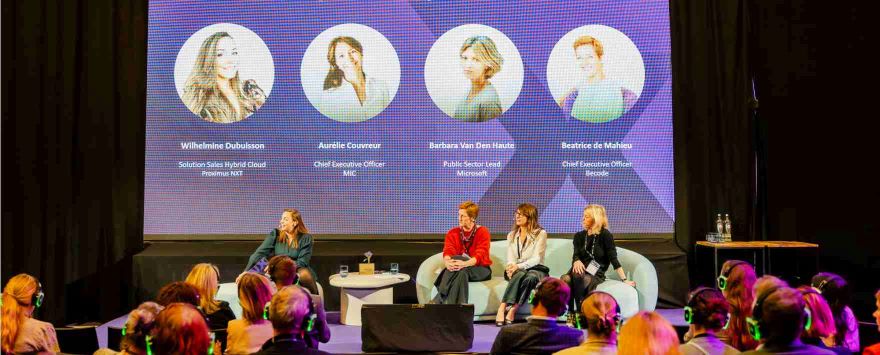
Not diverse enough but certainly inclusive
However, every organisation benefits from more diversity. “That goes without saying,” Aurélie Couvreur, CEO at MIC, a partnership between Proximus, Microsoft and the Walloon Region, thinks. “But it doesn't happen automatically. The chances of getting hired as a young woman are lower, that remains the reality.” But men also still have to deal with prejudice. “If you apply for a sabbatical as a man to look after your children, you’ll quickly notice that people find that odd,” Béatrice says.
But although the IT sector is still under-diversified, it is inclusive. “Women working in the sector agree,” Aurélie says. “Whether you are male or female really doesn’t matter, although it would be great if a few more women would choose IT. More diversity remains welcome.” Because, here too, together you achieve more, or, as it was said at Think NXT 2024: “Shaping a bright tomorrow, together.”





